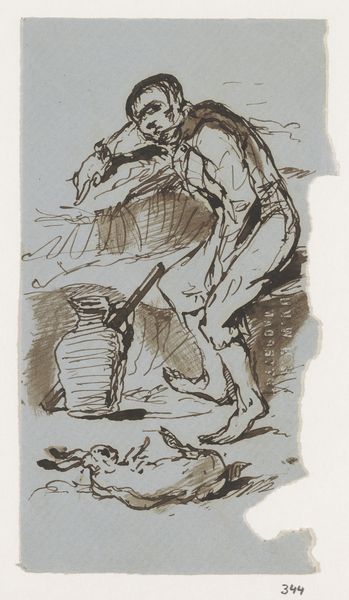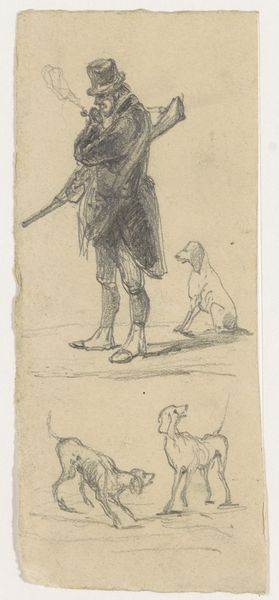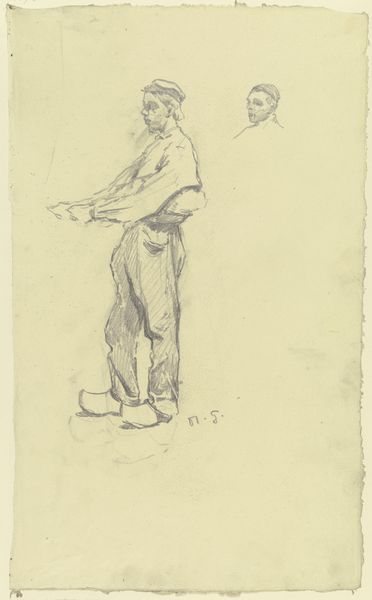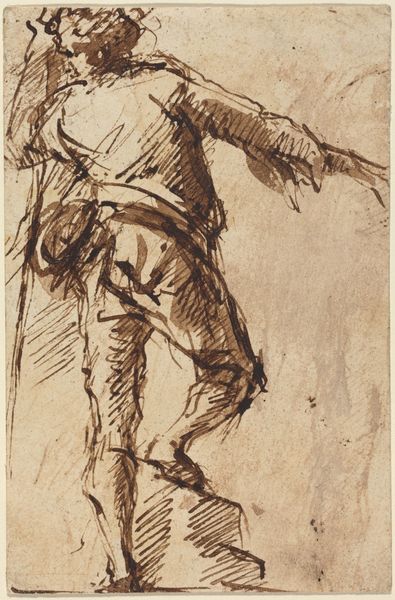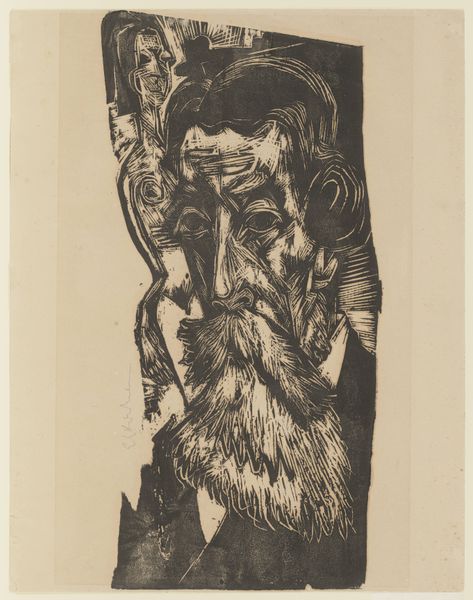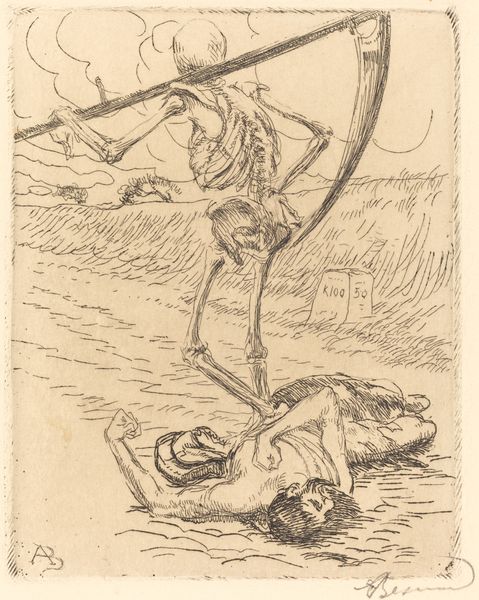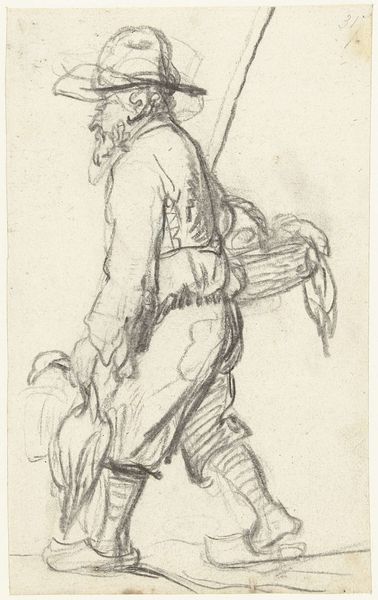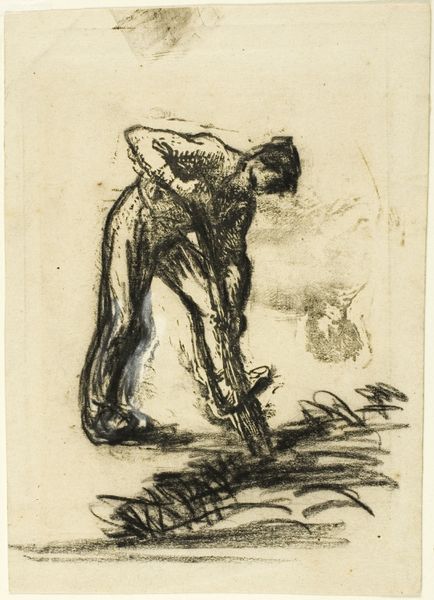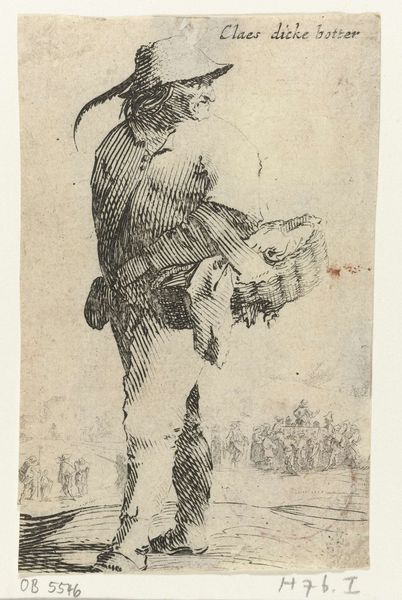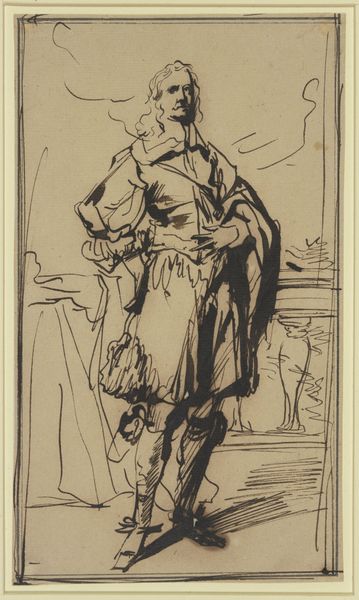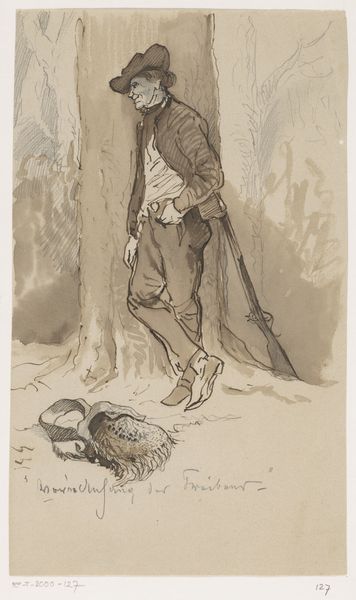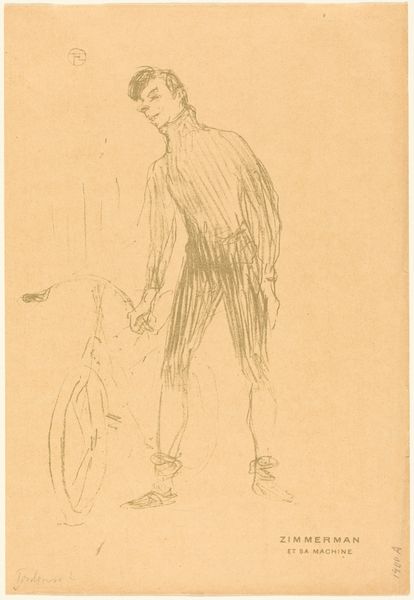
Dimensions: height 157 mm, width 87 mm
Copyright: Rijks Museum: Open Domain
Johannes Tavenraat made this drawing, "Drijver met haas," or "Herdsman with Hare," with pen and brown ink in the Netherlands, most likely in the mid-19th century. The sketch depicts a figure of lower social standing, probably a hunter or farmer, holding up a hare he has caught. The hare itself becomes a symbol of rural life and the economic realities of the time. The inscription below the drawing loosely translates to: "Herdsman; then there is again one boy!" This phrase seems to suggest a narrative, perhaps alluding to the herdsman providing sustenance for a family. Tavenraat's work provides a glimpse into the everyday lives and social dynamics of the Netherlands. Historians can delve into archives, period literature, and social surveys to better understand the drawing and its cultural context. In doing so, we learn about the changing role of rural life, the rise of new social classes, and the complex relationship between art and society.
Comments
No comments
Be the first to comment and join the conversation on the ultimate creative platform.

